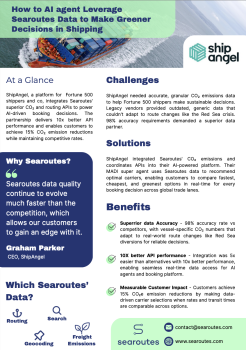Case Studies
Discover how global leaders like BASF, Michelin, and ANZCO use Searoutes’ GLEC-certified carbon data to transform freight emissions tracking, procurement, and sustainability reporting. Explore real-world success stories today.
See how digital freight innovators like Shypple and Tetrixx integrate Searoutes’ API for real-time CO₂ transparency, cost savings, and seamless sustainability analytics.
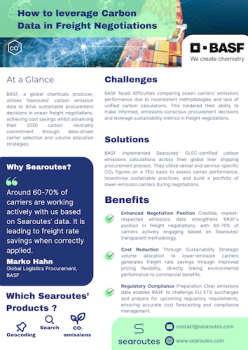
How to leverage Carbon Data in Freight Negotiations
BASF struggled to compare ocean carriers’ carbon emissions due to inconsistent methodologies and lack of unified calculations. This prevented informed, emissions-conscious procurement decisions and hindered their ability to leverage sustainability metrics effectively in freight negotiations.
It implemented Searoutes’ GLEC-certified carbon emissions calculations across global liner shipping procurement. They use vessel and service-specific CO2 figures on a TEU basis to assess carrier performance, incentivise sustainable practices, and build lower-emission carrier portfolios.
Michelin uses Searoutes for consistent and accurate CO2 emissions in reporting
Michelin’s Intercontinental Control Tower faced volatile market disruptions affecting emissions tracking, lacked financial frameworks integrating carbon costs into procurement decisions, and struggled with inconsistent emissions data quality from carriers using varying methodologies.
It integrated Searoutes’ API-driven approach into their procurement system to standardise emissions calculations, refine carrier data quality, and incorporate accurate CO2e metrics into their internal financial index for objective tender bid evaluation.
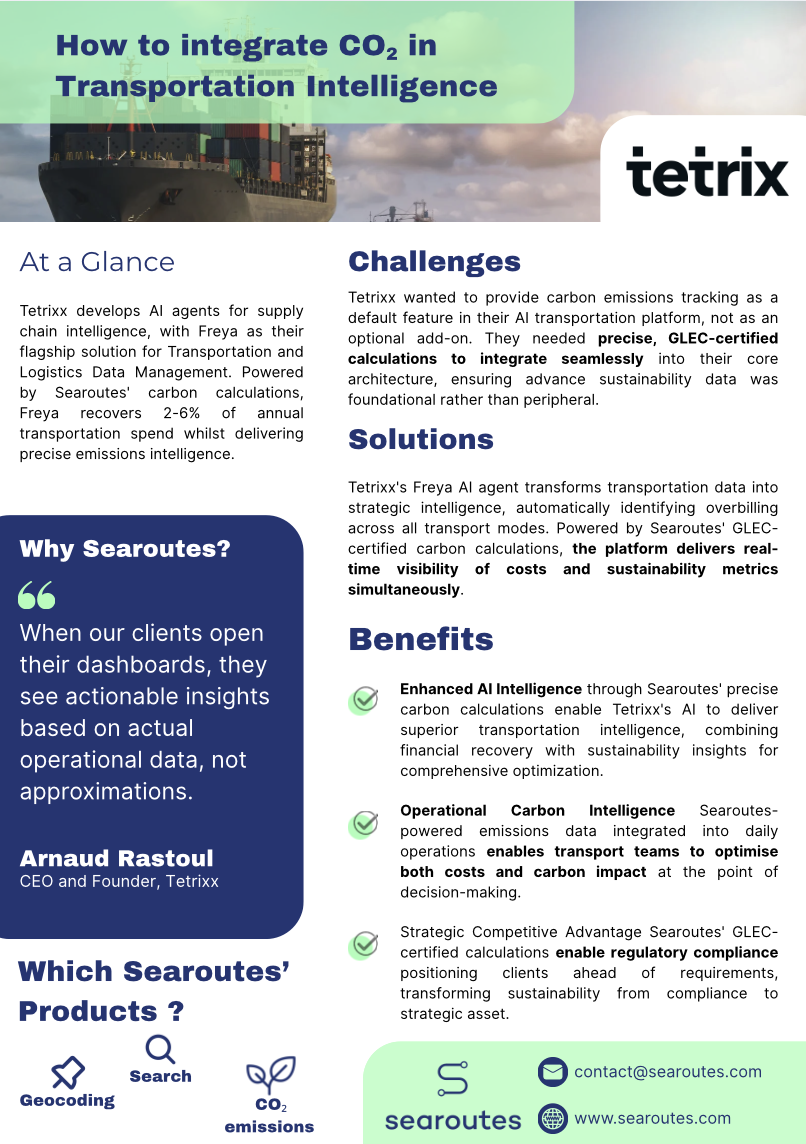
How to integrate CO₂e in Transportation Intelligence
Tetrixx wanted to provide carbon emissions tracking as a default feature in their AI transportation platform, not as an optional add-on. They needed precise, GLEC-certified calculations to integrate seamlessly into their core architecture as foundational data.
Its AI agent transforms transportation data into strategic intelligence, automatically identifying overbilling across all transport modes. Powered by Searoutes’ GLEC-certified carbon calculations, it delivers real-time cost and sustainability visibility.
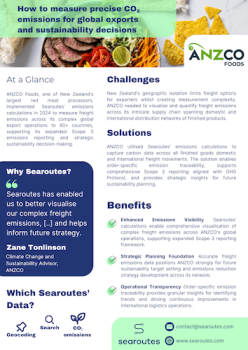
How to measure precise CO₂e emissions for global exports and sustainability decisions
ANZCO is one of New Zealand’s largest red meat processors. We procure the country’s finest beef and lamb, processing it across our seven processing and two manufacturing sites, and export 90-95% of our product to over 80 countries worldwide.
New Zealand’s distance from global markets presents a unique challenge for exporters, limiting the range of freight options available. ANZCO is committed to annually reporting our emissions, including Scope 3 freight emissions.
Using Searoutes has enabled them to better visualise our complex freight emissions, which aligns well with our broader emissions profile and helps inform future strategy.
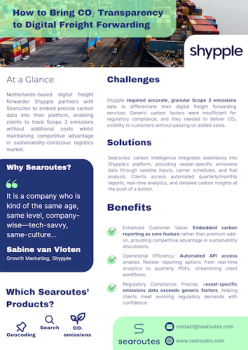
How to Bring CO₂e Transparency to Digital Freight Forwarding
Shypple needed accurate Scope 3 emissions data to differentiate their digital freight forwarding services. Generic carbon factors were insufficient for regulatory compliance, and they required CO₂ visibility without added costs to customers.
Searoutes’ API integrates seamlessly into Shypple’s platform, providing vessel-specific emissions data through satellite inputs and carrier schedules. Clients access automated reports, real-time analytics, and detailed carbon insights instantly.
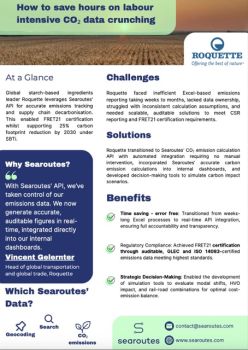
How To Save Hours in CO₂e Emissions Data Crunching
Roquette’s data analyst Corentin Hanonge reveals how switching from Excel-based CO₂ calculations to Searoutes’ API dramatically reduced processing time. Previously, obtaining emissions results from raw Excel extracts took weeks or months. With Searoutes, turnaround became significantly faster.
The automated system now delivers real-time insights through internal dashboards, enabling quarterly reviews and scenario simulations. This transformation supported Roquette’s FRET21 certification, as Searoutes’ GLEC-certified calculator simplified auditing. By eliminating manual data crunching, Roquette gained data ownership and scalable sustainability reporting.
How to Leverage AI to Make Green Decision Making gin Shipping
Graham Parker, Co-founder of ShipAngel, a Fortune 500 shipper platform, explained why it partnered with Searoutes to integrate superior CO₂ emissions and routing data into their AI-powered booking system. After testing multiple vendors, Searoutes delivered 98% accuracy rates with API integration five times easier and performance ten times better than competitors.
The collaboration delivers measurable results for ShipAngel’s customers, including a 15% CO₂ emission reduction achieved by one large importer through data-driven carrier selection. Searoutes’ granular, vessel-specific data proved especially valuable during the Red Sea crisis, adapting faster than competitors to route changes.
